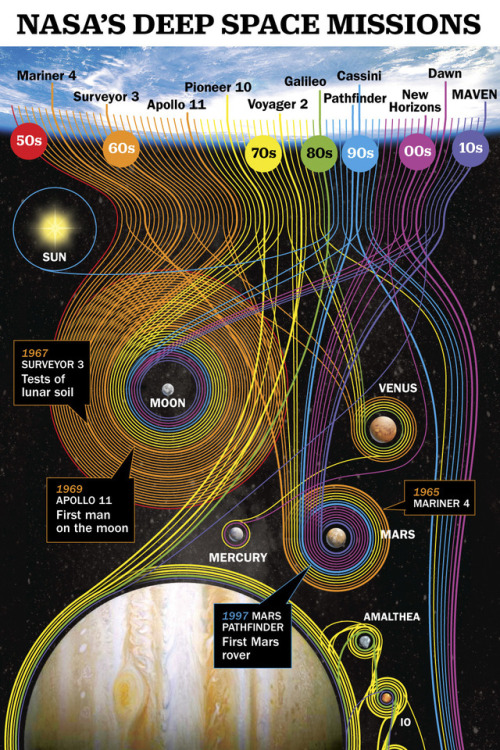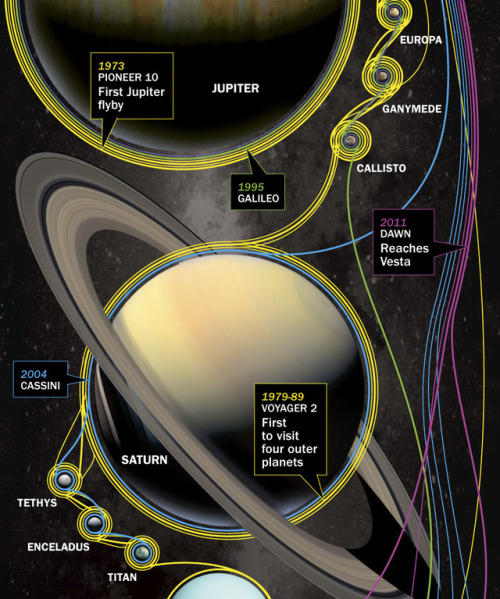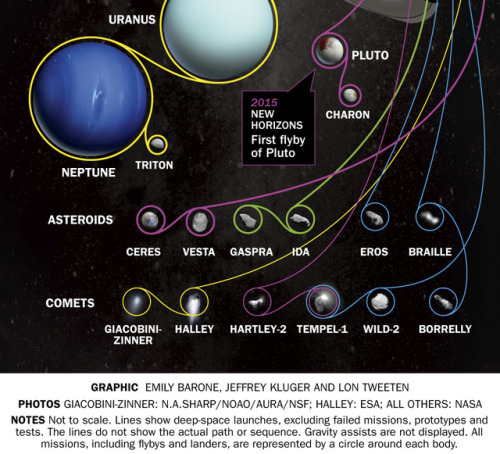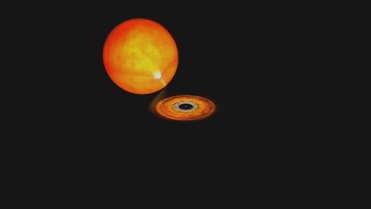When The Moon's Shadow Falls On Earth
When the Moon's Shadow Falls on Earth
On July 2, 2019, a total solar eclipse will pass over parts of Argentina and Chile.

Solar eclipses happen when the Moon passes directly between the Sun and Earth, casting its shadow onto Earth’s surface. Because the Moon’s orbit isn’t perfectly in line with the Sun and Earth, its shadow usually passes above or below Earth. But when it lines up just right, we get a solar eclipse!

People in the inner part of the Moon’s shadow — the umbra — have the chance to witness a total solar eclipse, while those in the outer part of the shadow — the penumbra — experience a partial solar eclipse.

The path of the total solar eclipse stretches across parts of Chile and Argentina. People outside this path may see a partial eclipse or no eclipse at all.
During a total solar eclipse, the Moon blocks out the Sun’s bright face, revealing its comparatively faint outer atmosphere, the corona. The corona is a dynamic region that is thought to hold the answers to questions about the fundamental physics of the Sun — like why the corona is so much hotter than the Sun’s surface and how the Sun’s constant outflow of material, the solar wind, is accelerated to such high speeds.

Image Credit: Miloslav Druckmüller, Peter Aniol, Shadia Habbal
Our Parker Solar Probe and the upcoming Solar Orbiter mission from the European Space Agency are exploring these questions by flying through the corona itself and taking unprecedented measurements of the conditions there. Plus, our newly-chosen PUNCH mission will create tiny, artificial eclipses in front of its cameras — using an instrument called a coronagraph — to study structures in the Sun’s corona and examine how it generates the solar wind.
Watching the eclipse
It’s never safe to look directly at the uneclipsed or partially eclipsed Sun – so you’ll need special solar viewing glasses or an indirect viewing method, like pinhole projection, to watch the eclipse.

For people in the path of totality, there will be a few brief moments when it is safe to look directly at the eclipse. Only once the Moon has completely covered the Sun and there is no sunlight shining is it safe to look at the eclipse. Make sure you put your eclipse glasses back on or return to indirect viewing before the first flash of sunlight appears around the Moon’s edge.
No matter where you are, you can watch the eclipse online! The Exploratorium will be streaming live views of the eclipse with commentary in both English and Spanish starting at 4 p.m. EDT / 1 p.m. PDT on July 2. Watch with us at nasa.gov/live!
Para más información e actualizaciones en español acerca del eclipse, sigue a @NASA_es en Twitter o vea esta hoja de hechos.
Make sure to follow us on Tumblr for your regular dose of space: http://nasa.tumblr.com.
More Posts from Ocrim1967 and Others










(Source)



Deep Space Missions










This Is What We Know About Black Holes In Advance Of The Event Horizon Telescope’s First Image
“For hundreds of years, humanity has expected black holes to exist. Over the course of all of our lifetimes, we’ve collected an entire suite of evidence that points not only to their existence, but to a fantastic agreement between their expected theoretical properties and what we’ve observed. But perhaps the most important prediction of all — that of the event horizon’s existence and properties — has never been directly tested before.
With simultaneous observations in hand from hundreds of telescopes across the globe, scientists have finished reconstructing an image, based on real data, of the largest black hole as seen from Earth: the 4 million solar mass monster at the center of the Milky Way. What we’ll see on April 10 will either further confirm General Relativity or cause us to rethink all that we believe about gravity. Eager with anticipation, the world now awaits.”
The Event Horizon Telescope will, on April 10 (tomorrow, at the time of this writing), release an image two years in the making: of the event horizon of the black hole at the Milky Way’s center. Many will look at this as the first definitive proof that black holes truly exist, but we mustn’t forget all the (overwhelming!) evidence we already have in hand. There is a ton that we already know about black holes that has been demonstrated observationally, and all of it is in spectacular agreement with what we theoretically expect.
On the eve of the Event Horizon Telescope’s big announcement, take some time to get a little perspective, and learn what we already know about black holes!


Millisecond Pulsar with Magnetic Field Structure
A pulsar is a rapidly rotating neutron star that emits pulses of radiation (such as X-rays and radio waves) at regular intervals. A millisecond pulsar is one with a rotational period between 1 and 10 milliseconds, or from 60,000 to 6,000 revolutions per minute. Pulsars form in supernova explosions, but even newborn pulsars don’t spin at millisecond speeds, and they gradually slow down with age. If, however, a pulsar is a member of a binary system with a normal star, gas transferred from the companion can spin up an old, slow pulsar to the millisecond range.
Credit: NASA, Dana Berry: Lead Animator Michael McClare (HTSI)
Cosmic rays
Cosmic rays provide one of our few direct samples of matter from outside the solar system. They are high energy particles that move through space at nearly the speed of light. Most cosmic rays are atomic nuclei stripped of their atoms with protons (hydrogen nuclei) being the most abundant type but nuclei of elements as heavy as lead have been measured. Within cosmic-rays however we also find other sub-atomic particles like neutrons electrons and neutrinos.

Since cosmic rays are charged – positively charged protons or nuclei, or negatively charged electrons – their paths through space can be deflected by magnetic fields (except for the highest energy cosmic rays). On their journey to Earth, the magnetic fields of the galaxy, the solar system, and the Earth scramble their flight paths so much that we can no longer know exactly where they came from. That means we have to determine where cosmic rays come from by indirect means.

Because cosmic rays carry electric charge, their direction changes as they travel through magnetic fields. By the time the particles reach us, their paths are completely scrambled, as shown by the blue path. We can’t trace them back to their sources. Light travels to us straight from their sources, as shown by the purple path.

One way we learn about cosmic rays is by studying their composition. What are they made of? What fraction are electrons? protons (often referred to as hydrogen nuclei)? helium nuclei? other nuclei from elements on the periodic table? Measuring the quantity of each different element is relatively easy, since the different charges of each nucleus give very different signatures. Harder to measure, but a better fingerprint, is the isotopic composition (nuclei of the same element but with different numbers of neutrons). To tell the isotopes apart involves, in effect, weighing each atomic nucleus that enters the cosmic ray detector.

All of the natural elements in the periodic table are present in cosmic rays. This includes elements lighter than iron, which are produced in stars, and heavier elements that are produced in violent conditions, such as a supernova at the end of a massive star’s life.

Detailed differences in their abundances can tell us about cosmic ray sources and their trip through the galaxy. About 90% of the cosmic ray nuclei are hydrogen (protons), about 9% are helium (alpha particles), and all of the rest of the elements make up only 1%. Even in this one percent there are very rare elements and isotopes. Elements heavier than iron are significantly more rare in the cosmic-ray flux but measuring them yields critical information to understand the source material and acceleration of cosmic rays.

Even if we can’t trace cosmic rays directly to a source, they can still tell us about cosmic objects. Most galactic cosmic rays are probably accelerated in the blast waves of supernova remnants. The remnants of the explosions – expanding clouds of gas and magnetic field – can last for thousands of years, and this is where cosmic rays are accelerated. Bouncing back and forth in the magnetic field of the remnant randomly lets some of the particles gain energy, and become cosmic rays. Eventually they build up enough speed that the remnant can no longer contain them, and they escape into the galaxy.

Cosmic rays accelerated in supernova remnants can only reach a certain maximum energy, which depends on the size of the acceleration region and the magnetic field strength. However, cosmic rays have been observed at much higher energies than supernova remnants can generate, and where these ultra-high-energies come from is an open big question in astronomy. Perhaps they come from outside the galaxy, from active galactic nuclei, quasars or gamma ray bursts.

Or perhaps they’re the signature of some exotic new physics: superstrings, exotic dark matter, strongly-interacting neutrinos, or topological defects in the very structure of the universe. Questions like these tie cosmic-ray astrophysics to basic particle physics and the fundamental nature of the universe. (source)










This Is How To Bring Dark Skies Back In An Increasingly Developed World
“A dark night sky is something we not only all deserve, it’s something that we could very easily have for a relatively small investment. The benefits, in addition to long-term cost savings, education, and the environmental positives, can be taken in all at once by everyone who both lives in, or simply passes through, your town.
And for those of you still asking, “what benefit is that?” As soon as you encounter your first dark sky community, you’ll see for yourself that there’s no explanation required. To take it all in, just look up.”
When was the last time you saw the Milky Way? If you’re like 99% of the United States or Europe, it wasn’t from your own backyard. While you might assume that’s because we need to have well-lit areas where most of us live, that’s only partially correct. It’s because we choose to have brightly-lit areas to meet our safety and commercial nighttime needs, but there’s a fundamental difference between well-lit and brightly-lit. More than 20 independent communities have taken all the steps necessary to restore darkness to their areas, following the recommendations and getting certified by the IDA: the International Dark Sky Association.
Forget about asking, “why aren’t there more?” Instead, try being the change you want to see, and work to bring dark skies, as well as health and environmental benefits, back to your own community!
A Tiny Satellite Studies Stormy Layers

The gif above shows data taken by an experimental weather satellite of Hurricane Dorian on September 3, 2019. TEMPEST-D, a NASA CubeSat, reveals rain bands in four layers of the storm by taking the data in four different radio frequencies. The multiple vertical layers show where the most warm, wet air within the hurricane is rising high into the atmosphere. Pink, red and yellow show the areas of heaviest rainfall, while the least intense areas of rainfall are in green and blue.
How does an Earth satellite the size of a cereal box help NASA monitor storms?

The goal of the TEMPEST-D (Temporal Experiment for Storms and Tropical Systems Demonstration) mission is to demonstrate the performance of a CubeSat designed to study precipitation events on a global scale.
If TEMPEST-D can successfully track storms like Dorian, the technology demonstration could lead to a train of small satellites that work together to track storms around the world. By measuring the evolution of clouds from the moment of the start of precipitation, a TEMPEST constellation mission, collecting multiple data points over short periods of time, would improve our understanding of cloud processes and help to clear up one of the largest sources of uncertainty in climate models. Knowledge of clouds, cloud processes and precipitation is essential to our understanding of climate change.
What is a CubeSat, anyway? And what’s the U for?
CubeSats are small, modular, customizable vessels for satellites. They come in single units a little larger than a rubix cube - 10cmx10cmx10cm - that can be stacked in multiple different configurations. One CubeSat is 1U. A CubeSat like TEMPEST-D, which is a 6U, has, you guessed it, six CubeSat units in it.

Pictured above is a full-size mockup of MarCO, a 6U CubeSat that recently went to Mars with the Insight mission. They really are about the size of a cereal box!
We are using CubeSats to test new technologies and push the boundaries of Earth Science in ways never before imagined. CubeSats are much less expensive to produce than traditional satellites; in multiples they could improve our global storm coverage and forecasting data.
Make sure to follow us on Tumblr for your regular dose of space: http://nasa.tumblr.com










This Is What The Milky Way’s Magnetic Field Looks Like
“The Milky Way’s gas, dust, stars and more create fascinating, measurable structures. Subtracting out all the foregrounds yields the cosmic background signal, which possesses tiny temperature imperfections. But the galactic foreground isn’t useless; it’s a map unto itself. All background light gets polarized by these foregrounds, enabling the reconstruction of our galaxy’s magnetic field.”
Have you ever wondered what our galaxy’s magnetic field looks like? As long as we restrict ourselves to looking in the type of light that human eyes can see, the optical portion of the spectrum, we’re extremely limited as far as what we can infer. However, if we move on to data from the microwave portion of the spectrum, and in particular we look at the data that comes from the polarization of background light (and the foreground light directly), we should be able to reconstruct our galaxy’s magnetic fields to the best precision ever. The Planck satellite, in addition to mapping the CMB to better precision than ever before, has enabled us to do exactly that.
Even though there are still some small questions and uncertainties, you won’t want to miss these incredible pictures that showcase just how far we’ve come!










5 Things We Still Don’t Know About Black Holes (And 2 We Do) After LIGO
“1.) How small are the lowest-mass black holes?
LIGO has yet to detect any low-amplitude binaries, providing no information about this population.”
Beginning in 2015, the LIGO detectors began to see robust, bona fide signals of gravitational waves. Of the 11 signals detected to date, 10 of them correspond to black hole-black hole mergers. Gravitational wave astronomy has not only opened up a whole new eye on the Universe, it’s opened up a whole new world as far as our understanding of black holes go. With these 10 mergers under our belt, and an upgraded data run expected later this year, it’s time to take stock of what we don’t yet know, and how we hope to get there.
Here’s where we are today in our understanding of LIGO’s black holes.










Yes, The Apollo Moon Landings Really Did Happen
“2.) We have extensive photographic and video evidence from the Apollo missions themselves. How could the lunar module have ascended back off of the surface and returned the astronauts back to the orbiting module which would take them back to Earth? Exactly like the video above shows, from direct Apollo 17 footage. The hypergolic propellant system isn’t based off of a single explosion, but rather a constant thrust of ~16,000 Newtons that was steadily delivered over a timespan of about 5 minutes. There’s no exhaust trail because there’s no lunar atmosphere, but you can track the spacecraft’s accelerated motion for yourself with even basic modern software.”
We’re less than a month away from the official 50th anniversary of the first crewed Moon landing, and there are all sorts of good reasons to celebrate. But for most of us alive today, the final Apollo mission occurred before we were born. Perhaps because of this distance between then and now, there are a great many people who don’t believe that the lunar landings ever occurred. While you might (rightfully) dismiss this position as an uninformed conspiracy, you can also immediately point to a slew of scientific evidence to demonstrate that yes, we did go to the Moon, and here is an enormous suite of data to back that up. From thousands of photographs to suites of instruments and scientific data to an examination of the landing sites today, everything lines up.
Come get the evidence for yourself, and don’t let someone’s conspiracy-minded ravings lead you astray.
-
 sleeping-with-adub liked this · 1 year ago
sleeping-with-adub liked this · 1 year ago -
 mekkyz-dubz reblogged this · 1 year ago
mekkyz-dubz reblogged this · 1 year ago -
 mekkyz-dubz liked this · 1 year ago
mekkyz-dubz liked this · 1 year ago -
 ctzenb-u liked this · 1 year ago
ctzenb-u liked this · 1 year ago -
 misssickn liked this · 1 year ago
misssickn liked this · 1 year ago -
 emibertachini liked this · 1 year ago
emibertachini liked this · 1 year ago -
 crookedbouquetchopshop liked this · 1 year ago
crookedbouquetchopshop liked this · 1 year ago -
 maitropnani liked this · 1 year ago
maitropnani liked this · 1 year ago -
 valleytech09 liked this · 2 years ago
valleytech09 liked this · 2 years ago -
 venussunsett liked this · 4 years ago
venussunsett liked this · 4 years ago -
 durinsbride liked this · 4 years ago
durinsbride liked this · 4 years ago -
 0heymoon liked this · 4 years ago
0heymoon liked this · 4 years ago